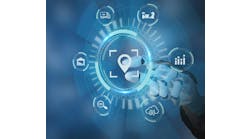The chances are very good that you’re reading these words right now on a device of some type, whether it’s a computer, a tablet, a smartphone or maybe even a smartwatch. And even if you’re reading this in the print edition of the magazine, it’s a virtual certainty that your smartphone is within easy reach. Not only are we living in the Information Age, but we’re living in the Always-On Information Age, where everybody has access to the latest news instantly.
That’s not to say, of course, that everybody actually spends the time reading all that information… or even reads at all. We’re a society of skimmers, where the news of the day is neatly compartmentalized into whatever is “trending” now, saving us the trouble of hunting down news and information on our own. We’ve become perfectly comfortable with letting social media apps make the decisions for us, even after learning these apps are often powered by algorithms that are manipulated to favor specific political and social ideologies.
We like letting machines do that kind of work for us, even though in the back of our minds we kind of wonder just how good a job these machines are doing at picking exactly what we look at—and what we’ll never ever hear about unless, of course, a human person actually tells us about it. It’s a trade-off, though, and part of the attraction to automation and machine intelligence is that we get back from the machines a lot more than we give up. That’s the idea, anyways.
One of the key selling points to automation is safety, and it’s not hard to figure out why. Whether it’s an accident caused by a forklift hitting a pedestrian in a warehouse or a truck driver jackknifing on the highways, the thought that an employee could be put in harm’s way at any moment of the day is a constant torment to material handling and logistics managers. So the idea of an automated warehouse populated by AGVs powered by sensors and navigating with an AI-based link to a cloud-based WMS… well, that just sounds great. And clearing out the highways to make room for autonomous vehicles whose drivers never fall asleep at the wheel sounds like the perfect solution to truck driver shortages and skyrocketing insurance premiums. What’s not to like about automation?
But that’s just the problem… people don’t seem to like robots in the workplace. A recent study conducted by Ball State University and Villanova University suggests that merely the thought of robots can make people sick.
“People who live and work in areas where automation is taking place are sickened by the thought of losing their jobs and having no way of providing for themselves or their families,” says Michael Hicks, director of Ball State’s Center for Business and Economic Research. The robots don’t necessarily need to be taking anybody’s job, you see—it’s the premonition that someday soon, those infernal automatons will be coming to put you on the unemployment line that is causing people mental and physical hardship.
“The actual and felt threats from automation may not immediately manifest into morbidities,” Hicks admits, “but the increasing prevalence of poorer self-reported health and feelings of deteriorating physical and mental health can have a direct and lasting impact on individuals, families and communities.”
Okay, one might argue, that’s just one study and hardly proof of any real harm caused by the robots themselves. That argument doesn’t hold up well, though, in the wake of Uber’s disastrous trial run of autonomous vehicles in Arizona. In March, one of Uber’s self-driving vehicles—which even had a human co-pilot behind the wheel—struck and killed a pedestrian in Tempe. Uber’s immediate reaction was to halt all such trial runs in Tempe as well as Pittsburgh, San Francisco and Toronto. The lawyers and courts will have to determine if Uber was criminally negligent in this case; I suspect we haven’t heard the last of this, not by a long shot.
In response, Toyota suspended tests of its own robot car program, dubbed Chauffeur, in Michigan and California. Speaking to a Bloomberg reporter, Toyota spokesperson Brian Lyons said, “Because we feel the [Uber] incident may have an emotional effect on our test drivers, we have decided to temporarily pause our Chauffeur mode testing on public roads.”
I suspect that both Uber and Toyota will eventually start testing their self-driving cars again, once the political firestorm over “killer robot cars” dies down. And I certainly can’t imagine Amazon ever turning off the switch powering all of their Kiva warehouse robots; as of last fall, the online retail giant had more than 100,000 robots deployed in warehouses throughout the world, with plans to deploy many, many more, according to the New York Times. So for better or for worse, the robots are here to stay.
But if we’ve learned nothing else, we hopefully are starting to learn that the one thing that robots can’t do now, and will never be able to do (no matter what the futurists and sf writers want us to believe), is to understand what it means to be human. We can offload a lot of tasks to the robots, but let’s never forget that when something goes wrong, it’s up to us—the humans inside those warehouses and vehicles—to take responsibility for it and make sure it doesn’t happen again.




